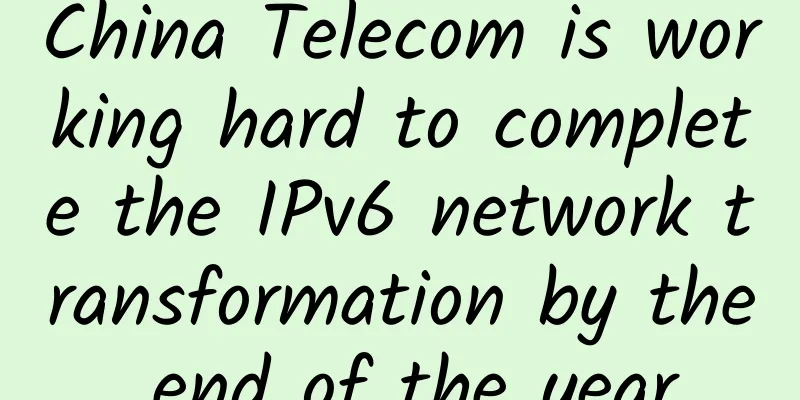Private 5G: Accelerating towards the Fourth Industrial Revolution (4IR)

|
Analysts report that private 5G adoption is increasing across all verticals around the world. We believe that the use of private 5G is a catalyst that can help industries further realize the productivity potential offered by the Fourth Industrial Revolution (4IR) approach. Analysts also report that private 5G adoption is increasing across verticals around the world. We envision an almost utopian ecosystem built on the hyper-connectivity of the Fourth Industrial Revolution, capable of processing information more intelligently, which will change the way we work and live. For example, highly distributed technology-enabled devices will continuously exchange information to precisely guide demand planning and decision making. Developed from electricity and electronics, we stand on the brink of a new digital revolution; a technology that is rapidly blurring the boundaries between the physical, digital and biological worlds. In different parts of the world, we are beginning to get glimpses of this hyper-productive utopia. For example, in Malaysia in particular, manufacturers are gradually integrating advanced technologies such as IoT and AI analytics, turning to smart facilities to increase productivity and improve total cost of ownership. For example, oil and gas companies facing increased market volatility and generational shifts in the workforce are learning to rely on robotics and AR/VR technologies to stay relevant in the digital future. Additionally, geopolitical and economic factors have exposed weak supply chains around the world, with the shipping and port industries turning to automation and sensing technologies as part of their response to these challenges. Currently, businesses, including in Malaysia, are slowly waking up to the need to use digital means to survive and thrive. Given the lack of awareness among local businesses on the actual benefits of 4IR (only 30%* of manufacturers are aware of the concept!), it is necessary to reiterate that the way forward lies in understanding and tapping into the potential of digital strategies for growth and productivity. The road to 4IR puts private 5G on the fast trackThe main obstacle for countries to achieve national transformation lies in addressing gaps in their digital infrastructure. Despite government policies and initiatives such as Industry4RWD (Malaysia’s national Industry 4.0 policy) and annual fiscal incentives, greater efforts must be made to further promote digitalization and automation to generate greater industrial sustainability. Private 5G could become the “secret weapon” for some businesses, especially those operating in or associated with manufacturing and related industries. In today’s scenario, limited spectrum and poor uplink speed in LTE (4G/Long Term Evolution) are not conducive to implementing next-generation industry applications. One example is the difficulty existing technologies have in providing high bandwidth and uplink speeds to upload high-definition video feeds to the cloud or application servers without human inspection and monitoring. The use of robots integrated with AI and machine vision, such as using LIDAR (Light Detection and Ranging) to build 3D images of the surrounding environment for real-time motion, further amplifies this problem. High bandwidth and reliable mobile connections are required to upload these images to the cloud or servers with high computing power. The importance of private 5G in achieving certain parts of the 4IR vision should not be underestimated. It lays the foundation for the fundamental building blocks of the 4IR (Big Data, IoT, Cloud). In addition, private 5G solves the existing interference, performance, and bandwidth issues faced by current wireless options such as LTE and WiFi by creating a closed network with dedicated spectrum, capacity, and infrastructure to meet the connectivity requirements of enterprises. Industries can improve productivity and efficiency by using the three powerful features of private 5G – eMBB (enhanced mobile broadband), URLLC (ultra-reliable low latency communications) and mMTC (massive machine type communications). Providing better coverage, higher bandwidth, low latency, stronger reliability and tighter security, these features already power cutting-edge mobile/wireless enterprise LANs. Is private 5G the universal solution?While the benefits offered by private 5G are enormous, we must be careful that it may not be suitable for all industries. Many businesses may be able to meet their needs by leveraging 5G offerings provided by public network infrastructure, rather than fully private 5G implementations. For example, some applications such as fleet management and logistics will find the proposed nationwide 5G coverage and indoor solutions sufficient to meet their needs. However, some manufacturing companies will benefit greatly from a private 5G setup. I have observed that many factory floors envision moving from wired processes to wireless processes, such as unlicensed WiFi, but are hampered or blocked by known interference issues that ultimately lead to degraded performance. And LTE hasn’t solved the problem completely either! Private 5G setups with newly allocated spectrum and their native capabilities are designed to meet these needs seamlessly. Likewise, previous attempts at immersive remote monitoring via AR/VR, teleoperation control, etc. have not really worked. The missing link between advanced equipment such as HD cameras mounted on drones or robots and centralized AR/VR/visuals must be filled by 5G as a wireless mobile medium. This will of course result in cost savings and increased efficiency. In addition, robots will be able to replace humans in potentially dangerous situations, replacing up to 50% to 100% of human capital requirements. This will allow businesses to shift their most valuable assets (people) to higher value tasks. With the private 5G option, the port industry will also be able to reduce cabling for rubber-tyred gantry (RTG) cranes and eliminate the need for manual handling of heavy equipment, thereby improving the safety and efficiency of operations. Crane operators will also be more effective as they will be able to operate multiple RTGs from a central control room. Accelerating the construction of digital economyTechnology is only part of the journey to private 5G. Digital transformation is a comprehensive journey, driven by and centered on the people at the center of the effort. As hardware becomes commoditized, we will begin to see more manufacturing and related industry-ready devices that can use 5G capabilities. As with all transformation efforts, the cost of investment needs to be justified. Because the ROI of integrating private 5G is still in its infancy, business leaders need to remain vigilant to understand the potential benefits for their own scenarios. Today, Malaysian manufacturers are integrating advanced technologies such as the Internet of Things (IoT) and artificial intelligence analytics, marking a shift toward smart facilities to increase productivity and reduce total cost of ownership. Private 5G will accelerate this adoption to realize the greatest Fourth Industrial Revolution (4IR) potential. Since we are all concerned about security, private networks provide greater control over which devices are granted access. This is especially important because the potential for connecting thousands (or even millions) of additional devices greatly amplifies the cybersecurity risks of today’s value chains. The secure handling of data should always be front and center of all business and technology discussions. TM One, the leading enterprise private 5G service provider, is best suited to partner with enterprises in every country on their digital transformation. Our technology and industry experts have unparalleled understanding of local markets. We are committed to our customers’ transformation journey and we believe that implementing private 5G will accelerate our customers’ IR4.0 business transformation outcomes. By leveraging our regional presence and extensive partner platform, we strive to provide customized products to meet the specific needs of each customer. Coupled with our widespread fiber infrastructure, we are ready to provide high service level agreements (SLAs) and launch private 5G solutions everywhere. We believe that private 5G has the potential to be a key enabler in accelerating 4IR adoption. With our clear focus on people-centric digitalization, TM will continue to help forge the path to a fruitful, high-tech future for all. |
>>: Advantages of Web 3.0 in Business Models
Recommend
To be successful in 2018, operators need to rely on these three strategies
The story of 2017 has come to an end. On the surf...
Sharktech: $99/month-2*E5-2670V2/32G memory/500G SSD disk/1Gbps unlimited traffic/Los Angeles data center
Sharktech is a long-established DC merchant in th...
Can the heavy fine on Alibaba serve as a wake-up call for the Internet giant?
The State Administration for Market Regulation ha...
Kubernetes uses OkHttp client for network load balancing
During an internal Java service audit, we discove...
Will cloud computing lead to the demise of large data centers?
I've heard this message repeatedly from publi...
Behind the surging IPv6, how much do you know about the DHCPv6 protocol?
With the popularization of IPv6 technology, DHCPv...
Aruba Launches ArubaESP, the Industry’s First Cloud-Native Platform for the Intelligent Edge
Aruba, a Hewlett Packard Enterprise company, today...
Now is the time to use 5G indoors
Operators have made huge investments in 5G RAN, w...
One year after the license was issued, China's 5G commercialization yesterday, today and tomorrow
A lot can change in life in a year, and for the 5...
How to make the integrated wiring system more reasonable?
The integrated wiring system is a wiring system s...
DesiVPS: $15/year-1GB/15G NVMe/1.5TB@10Gbps/San Jose data center
DesiVPS continues the Black Friday promotion in D...
Understanding Deterministic Networks in Seconds: Playing with Queues (Part 1)
Queue scheduling is a core issue in computer netw...
"Disruption" or "Pie in the sky", what is the charm of OpenRAN?
OpenRAN (Open Radio Access Network) seems to be v...
Operators' 5G services are now available? Don't be fooled!
Some operators have already started running befor...









